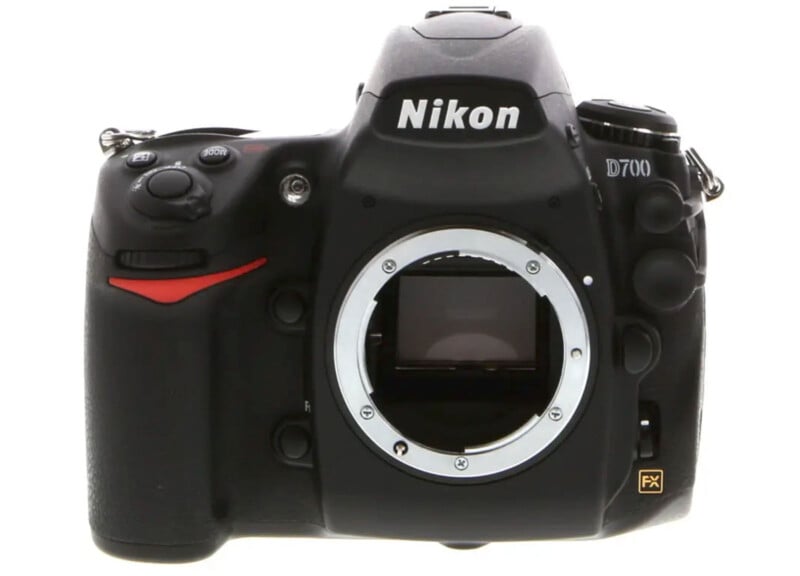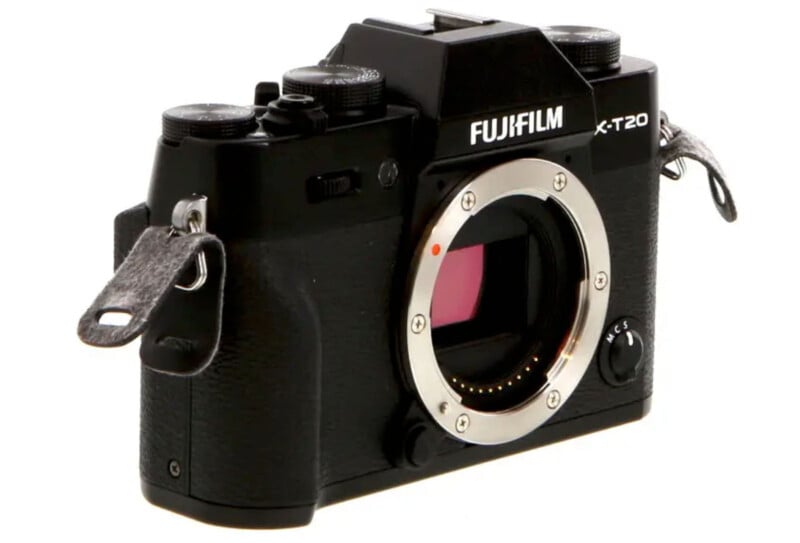Photographers on a Budget Do Not Need to Settle for Bad Cameras

As new entry-level cameras from major manufacturers become pricier and the segment shrinks altogether, photographers on a tight budget may be tempted to buy one of the many very cheap brand-new cameras available through online retailers. However, a much better option for those looking to get a camera without breaking the bank is the used market. You can get a lot of performance for relatively little money.
I’m not going to name specific offenders in the budget new camera segment, but it’s not hard to find the types of cameras I’m referring to. But browsing Amazon’s digital camera offerings reveals a wide range of brand-new junk that costs anywhere from about $20 to a few hundred bucks. I understand that the price can sometimes seem too good to pass up, but really, these cameras make promises that are too good to be true. They’re bad products that almost invariably take bad photos — much worse than what you can achieve on nearly all modern smartphones.
There are some rare situations where these junky cameras are good purchases, like when buying something for a young child who will likely damage, outright break, or lose their new photography toy. And even then, there are better options with just a bit more of a budget, like a used tough camera that is built like a tank.
I also understand that sometimes a person’s budget is too low to take full advantage of the used camera market, and a budget of around $100 is a hard cap. In these cases, it can be challenging to find even a very old DSLR and a very cheap lens to purchase, although it is not impossible.
You could buy a Canon EOS 20D and 18-55mm kit lens from KEH for around $85. A CompactFlash card and reader will increase the total outlay to around $100. Despite the camera’s age and 8.2-megapixel sensor, it can still take good-quality photos. Professional photographers captured incredible images with less for years.
However, a tight budget for a “new” camera and lens these days extends far beyond $100. Many brand-new camera kits, even so-called entry-level ones, cost around $1,000 or more. It is a hefty chunk of change, and many people who would love to own a nice camera are priced out of the hobby. I could go on for a long time about how the barrier to entry to photography is too high, but I’ll spare you that rant.
Instead of focusing on the problem, let’s consider some solutions. While the cheapest way into an interchangeable lens digital camera is an old entry-level DSLR and a similarly old kit lens — which are entirely capable of taking good photos, by the way — it is possible to buy a used professional-level camera for a relatively low price compared to a brand-new kit.
For example, a Nikon D300 is available for $150, a camera I used for a long time as my primary camera. You could get a Canon EOS 1D Mark III for around $300. Yes, it’s an older camera, but at one point, it was Canon’s best DSLR, and many professionals used it to capture award-winning photos. What about a nice full-frame Canon EOS 5D Mark II for around $320? Its 21-megapixel sensor is nothing to scoff. A 5D Mark III is not much more than that, either, by the way. Another full-frame option I used for a long time, the Nikon D3, is around $465 for one in excellent condition with the battery and charger included.

I could go on, but the point is that you can purchase the same cameras that professional photographers used for years at relatively accessible prices. Are they as good as professional cameras today? No, of course not, technology has improved a lot over the years. However, the pro DSLR cameras of yesterday can still take excellent photos today and they are built like tanks. Better yet, it is very easy to adapt DSLR lenses to mirrorless cameras, in the event photographers upgrade to something more modern later.

Speaking of mirrorless cameras, those aren’t off the table either for photographers with limited budgets. These will have some advantages over DSLR cameras like electronic viewfinders, better live view shooting (since it’s always live view), improved autofocus area coverage, and in most cases, superior video recording features and performance.
There are a lot of great options in the Micro Four Thirds space like the Panasonic Lumix GH3 ($200), GH4 ($350), or Panasonic Lumix G7 ($330). There are also Olympus models, like the E-M1 ($370), E-M10 Mark II ($370), and E-M10 Mark III ($390).
For APS-C cameras, there are numerous Fujifilm X Series cameras available for around $500, like the X-T10, X-E1, X-M1, and X-E2. Then there is the Canon EOS R100 with a kit lens, which is $550, and the Nikon Z50 for about $600.

Admittedly, at this point, the prices are getting up there a bit, but a used full-frame mirrorless camera may still be within reach for less money than the vast majority of brand-new interchangeable lens digital cameras. The Sony a7 II, for example, sports a very good 24.3-megapixel image sensor, a competent hybrid autofocus system, a good EVF, and solid Full HD video recording for about $650, more than $1,000 less than it cost brand new about a decade ago.
Obviously the latest and greatest Sony mirrorless cameras are better than the 12-year-old a7, but not everyone who wants a full-frame Sony mirrorless camera can afford the most recent models — they’re expensive.
The advantages of going with something like an original Sony a7 go beyond saving money, too, the E-mount is extremely versatile and there are tons of very affordable lens options, brand-new and used alike. It is one of the most adaptable lens mounts available and can easily work with older SLR lenses across various mounts.

This is not a comprehensive buying guide, as that would be a monumental undertaking that would quickly become outdated. The market is constantly shifting. Instead, what I hope I have demonstrated through a few choice examples is that photographers who don’t have $2,000 or more to spend on a brand-new interchangeable lens kit do not need to settle for junk. They do not need to hand their hard-earned money over to the lowest bidder and buy a crappy camera from a no-name company that delivers image quality barely better than a mid-tier smartphone.
Instead, photographers who desperately want to capture high-quality photos but are not fortunate enough to have the money for the newest offerings from today’s best manufacturers should look carefully at what these same companies were selling “yesterday.” While yes, new cameras are better than older ones, all else equal, new models rarely represent seismic shifts in imaging technology. Photographers 10 years ago or more used professional DSLR cameras to capture Pulitzer Prize-winning photos, and they’re more than capable of working for you today, whether you’re trying out photography for the first time or just looking to have more fun taking photos than you can achieve on your smartphone.
Photography is fun; it’s a wonderful way for people to express themselves and connect with the world around them. And there are many superb cameras out there that are often overlooked because they’re old and used. There are many pre-loved cameras, DSLR and mirrorless alike, waiting for another photographer to come along and use them to capture beautiful new photos. It could be you, and it’s a much better choice than buying a cheap new camera from a sketchy company just because it makes trendy promises about megapixels or resolution.
Image credits: Product photos by KEH. Header image created using an asset licensed via Depositphotos.
Source link


